Archive for the ‘Uncategorized’ Category
The 25 Best ‘Game of Thrones’ Episodes – Updated
July 14, 20172. “Hardhome” (Season 5, Episode 8)
Bran Stark’s plunge, Ned Stark’s death, the Red Viper’s skull-crushing, Jon Snow’s assassination – all of them take a back seat to this episodewhen it comes to shocking the entire Game of Thrones audience. With no precedent in George R.R. Martin’s novels, which merely allude to a cataclysm at the titular village without giving us a clue what happened, “Hardhome” stunned book-readers and TV-viewers alike. After an ominous buildup, the armies of the dead descended on Night’s Watch and wildling forces alike in a literal avalanche of walking corpses, guided by the demonic Night King. As Jon Snow sailed away from a legion of zombified humans, the true menace of the White Walkers was made unbearably clear.
I re-ranked the 25 best episodes of Game of Thrones for Rolling Stone.
The 40 Best ‘Game of Thrones’ Characters — Ranked and Updated
July 13, 201737. Wun-Wun
He was a giant among men. Literally. Wun-Wun was the only member of his ancient, towering race to survive the wildlings’ battles against White Walkers, Night’s Watchmen and Stannis Baratheon alike – as well as the only one to cross south to supposed safety beyond the Wall. He wound up battling fiercely for the cause of his one-time enemy Jon Snow, giving his life to defeat Ramsay Bolton and defend the North against its many enemies. He may not have been human, but he was one hell of a guy.
I ranked the 40 Best Game of Thrones characters for Rolling Stone. It’s a very different list than it was when I first wrote one of these a few years ago!
Return to ‘Oz’: 20 years ago, HBO released a seedy prison drama that changed the rules of TV forever
July 13, 2017Twenty years ago today, HBO went to prison and changed the course of television history. Oz, the network’s first foray into hourlong scripted drama, was the opening shot in a cultural revolution. Created by Tom Fontana, whose Homicide: Life on the Street was one of the pre-“prestige TV” era’s finest shows, and set in New York’s fictional Oswald State Penitentiary, the series utilized its “anything goes” cable setting to push the boundaries of sex, violence, subject matter and sheer scope beyond anything that had come before. Sex and the City would follow in 1998, and the almighty Sopranos arrived in 1999, but Oz is where it all began.
If you imagine a world where The Sopranos never happened and Ozbecame not just the prototype for ambitious cable dramas but also the template itself, the TV landscape would look different indeed. While not a stupid show by any means, Oz is far less cerebral in its pacing and approach than the shows for which it served as proof of concept.
Its six-season plot involves dozens of characters in multiple warring factions whose conflicts rocket along at a breakneck pace. It tackles the big issues with the bluntness of an after-school special rather than the therapist’s-couch thoughtfulness of The Sopranos or Mad Men — or, for that matter, the socio-political agitprop of The Wire (created by David Simon, whose reportage Fontana adapted into Homicide) or Orange Is the New Black (Jenji Kohan’s even more popular and acclaimed prison drama), the major series with which Oz arguably has the most in common. Twenty years later, Oz is a glimpse at a TV world that might have been.
On the occasion of its 20th anniversary (!!!), I wrote about Oz and its very different brand of pre-prestige TV for Mic. The result is of a piece with the essay I wrote for Thrillist using The Godfather to lampoon complaints about showrunners saying “it’s a 73-hour movie” and suchlike. There’s no one right way to do TV narrative, any more than there’s one right way to do film narrative, and I’m dismayed when people act as if there obviously is.
“Twin Peaks” thoughts, Season Three, Episode Nine
July 13, 2017Last time we visited, Twin Peaks unleashed the fires of the atom and the demons of the Black Lodge. For the follow-up, the show wants to talk about … love. Why not? If director David Lynch and co-writer/co-creator Mark Frost have proven anything in this inventive, powerful relaunch of their supernatural soap opera, it’s that they can do pretty much anything they damn well please. A show that spends minutes on end inside a nuclear explosion one week can depict lovable goofballs Deputy Andy and Lucy Brennan ordering living-room furniture the next.
The 100 Greatest Movies of the Nineties
July 13, 201749. Heavenly Creatures (1994)
Before Peter Jackson took us all to Middle-earth, he brought moviegoers to the mad world of two troubled teenagers – a fictional universe every bit as engrossing as J.R.R. Tolkien’s, but far more romantic and lethal. Based on a true-crime story, the film depicts pre-stardom Kate Winslet and Melanie Lynskey as Pauline Parker and Juliet Hume, two New Zealand teenagers whose BFF-ship blossoms first into love, then madness and ultimately murder. Jackson’s kinetic camera captures the rapturous swirl of teenage dreams before plunging us into its brutal, bloody endpoint. It’s a beautiful dark twisted fantasy. STC
I wrote about Natural Born Killers, Heavenly Creatures, and The Blair Witch Project for Rolling Stone’s list of The 100 Greatest Movies of the ’90s. My editor David Fear assembled an absolute murderers’ row of writers for this thing — it’s a real treat.
‘Game of Thrones’: Everything You Need to Know for Season 7
July 7, 2017When you play the game of thrones, you learn to expect the unexpected. But even so, the previous season of Game of Thrones did something totally unprecedented in the history of HBO’s blockbuster show: It got less complicated from start to finish, not more.
Yes, we are nearing the endgame, which means a whole lot of major players got knocked off the board last year. Now the unholy trinity of King in the North Jon Snow, Queen of the Seven Kingdoms Cersei Lannister and Mother of Dragons Daenerys Targaryen are in undisputed charge of their respective realms. Meanwhile, north of the Wall, the menace of the White Walkers and their eternal winter draws ever closer. This is the real war that all these minor squabbles between rival human factions have done nothing but enable.
And if the true enemy is about to reveal itself, you won’t wanna go into battle without good intel, right? That’s where we come in. Below you’ll find a region-by-region rundown of where everyone and everything stands prior to the start of the new season on Sunday, July 16th. The royals and their retinues, the human and the superhuman, the living and the dead – you’ll find all the info you need, and then some, before winter falls for good.
Thought Leader
June 30, 2017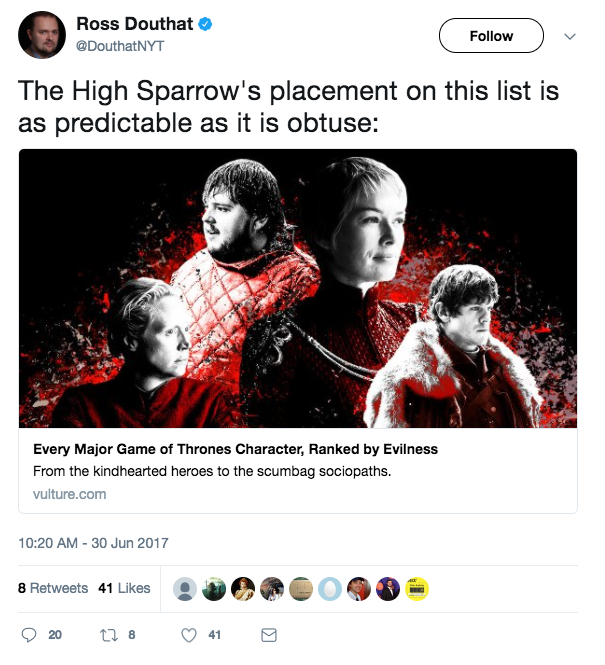
I really couldn’t ask for a more delightful criticism of my Game of Thrones Evil Rankings than Ross Douthat defending the High Sparrow
The A.V. Club’s favorite comics of 2017 so far
June 30, 2017Mirror Mirror II (2dcloud), anthology
As with any anthology, Mirror Mirror II features some entries that will leave more of an impression than others, but the totality of the work presented is both haunting and astounding. Collecting comics, prose, and illustrative work from such luminaries as Clive Barker and Al Columbia, as well as work by younger authors like Céline Loup and Trungles, editors Sean T. Collins and Julia Gfrörer have curated quite the book. The theme unifying all of these pieces is the convergence of the erotic and the macabre—some works being more explicit than others—but that may be the only commonality between them. Each one offers a striking aesthetic vision. And though some will resonate more deeply than others—which works stand out will most certainly depend on the reader—they accumulate to form an impressive volume. An enormity of spectacle is brought to bear on exploring the commingling of the pleasurable with the painful, the fantastic with the nightmarish, and the result is a series of truly shocking and often deeply moving images. Mirror Mirror II is troubling and challenging, but it is also rewarding and stunning—a thrilling experience that readers won’t soon forget. [Shea Hennum]
I’m proud to say that the AV Club selected Mirror Mirror II as one of its favorite comics of the year so far. The reviews for this book have been just wonderful.
The Boiled Leather Audio Hour Episode 64!
June 30, 2017Children of Men (A Patreon Production)
The Boiled Leather Audio Hour goes dystopian this month! By the special request of our Patreon supporter Jason, who earned the right to choose a topic for the podcast by subscribing at the $50 level, Sean & Stefan are taking a deep dive into the world of Children of Men, director Alfonso Cuarón’s gripping 2006 political science-fiction film. Starring Clive Owen and Julianne Moore and set in a near future where the world has been rocked by an infertility epidemic that has completely ended all childbirths for 18 years and counting, the movie is striking both for its technical virtuosity, particularly during its white-knuckle action sequences, and its emphasis on very human cruelty and empathy. How does its technical prowess affect its message? Where does the storytelling and imagery succeed, and where does it falter? What does its bleak yet ultimately optimistic vision of the future portend for our own grim present? We’ll do our best to answer those questions. Needless to say, spoilers abound!
Additional links:
Abraham Riesman’s article on the making of the film for Vulture.
Our Patreon page at patreon.com/boiledleatheraudiohour.
Our PayPal donation page (also accessible via boiledleather.com).
Every Major Game of Thrones Character, Ranked From Good to Evil
June 29, 2017Jon Snow
A reformer with results. Ned Stark’s (alleged) bastard rose from the ranks to become Lord Commander of the Night’s Watch, then rose from the dead after his underlings murdered him for being too humane to their lifelong enemies, the wildlings. He then helped liberate the North from the bloody grasp of House Bolton. He’s also a generous lover (“You know nothing, Jon Sn — oh!”), a secret Targaryen prince, and most likely the messiah.Sansa Stark
There’s a line in George R.R. Martin’s books about how alone among the Baratheon brothers, Robert was “the true steel,” strong and sharp and flexible and durable. Out of the Stark siblings, Sansa is the true steel. She’s shaken off a short lifetime of sexist princess stories, survived the lethal court intrigues of King’s Landing, weathered the untoward attentions of Littlefinger and the Hound, outlived her rapist Ramsay Bolton, and saved her brother Jon’s life. It’s possible that Petyr Baelish may win her over to the dark side, but until that happens, she’s on the side of the angels.Eddard Stark
Ned is dead, but he didn’t deserve to be. He made moral compromises over the course of his life, from lying to his wife Catelyn and everyone else about Jon’s parentage (including Jon himself) to playing the game of thrones alongside his dissolute old friend King Robert. But in the end, he sacrificed his honor to save his daughters’ lives. It’s not his fault that Cersei, Joffrey, and Littlefinger repaid his kindness with a knife in the back and a sword through the neck.
93 Shades of Gray: Because I am insane, I ranked every major Game of Thrones character in ascending order of evilness for Vulture. This trio of faves is on the good end of the spectrum.
“Twin Peaks” thoughts, Season Three, Episode Eight
June 26, 2017What is clear is the birth of Bob’s bracing message. This disturbing, disorienting episode explicitly ties the demon’s creation to the atom bomb’s detonation, an act of man that rivals, or betters, the dark deeds of any religion’s devil. The connection is no accident. Nor is it without precedent: Ever since the original Twin Peaks introduced supernatural horror into its director’s body of work, the link between otherworldly evil and real-world brutality has been a constant. Lynch treats human cruelty like a rupture in the fabric of reality through which demons of every shape and size can enter — think Lost Highway‘s white-faced Mystery Man, Mulholland Drive‘s monstrous dumpster-dweller and gibbering old folks, Inland Empire‘s balloon-faced Phantom and, of course, the dwellers of the Black Lodge. They all feed on and perpetuate the cycle of violence that enabled their emergence.
Some experiences and emotions are so cataclysmic that our everyday imagery and vocabulary cannot possibly do them justice; monsters give shape to those feelings, the same way an aria in an opera or a song in a musical gives human passion a voice. In crafting creatures like that denim-clad monster and his dark brethren, Lynch is doing what all great horror does. He’s taking the agony and fear we already feel and, like Dr. Frankenstein in his lightning-streaked laboratory, bringing it to unholy life. The real question this episode asks, then, is no more or less than the one pilot Robert A. Lewis asked when he dropped the atomic bomb on Hiroshima: “My God, what have we done?”
MIRROR MIRROR II @ Amazon
June 24, 2017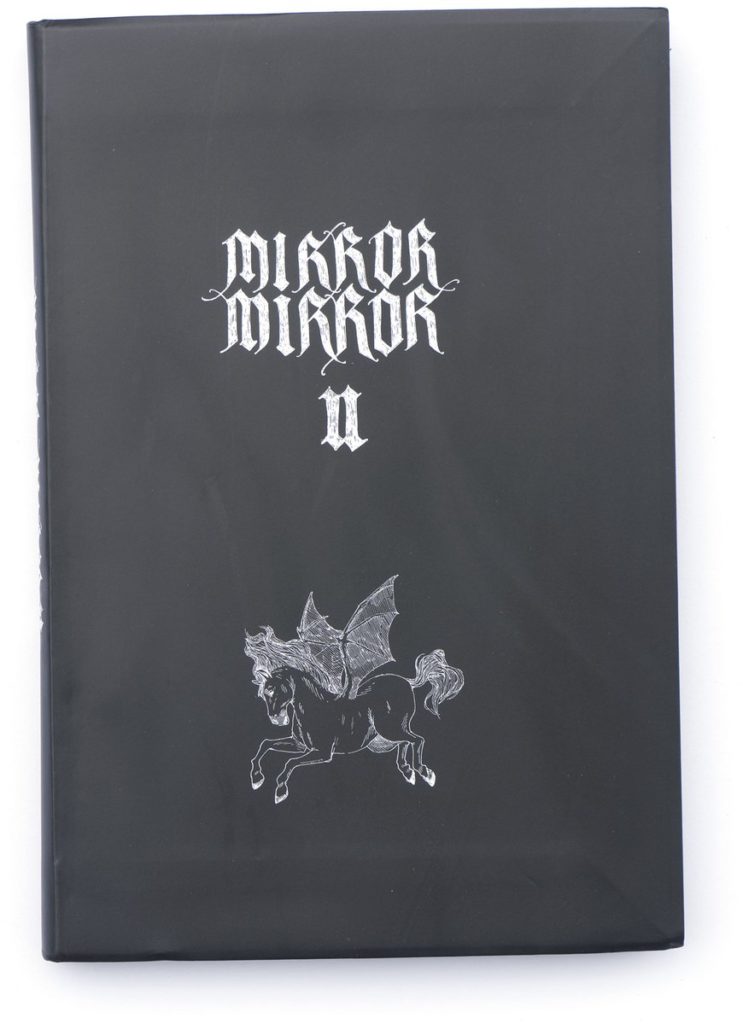

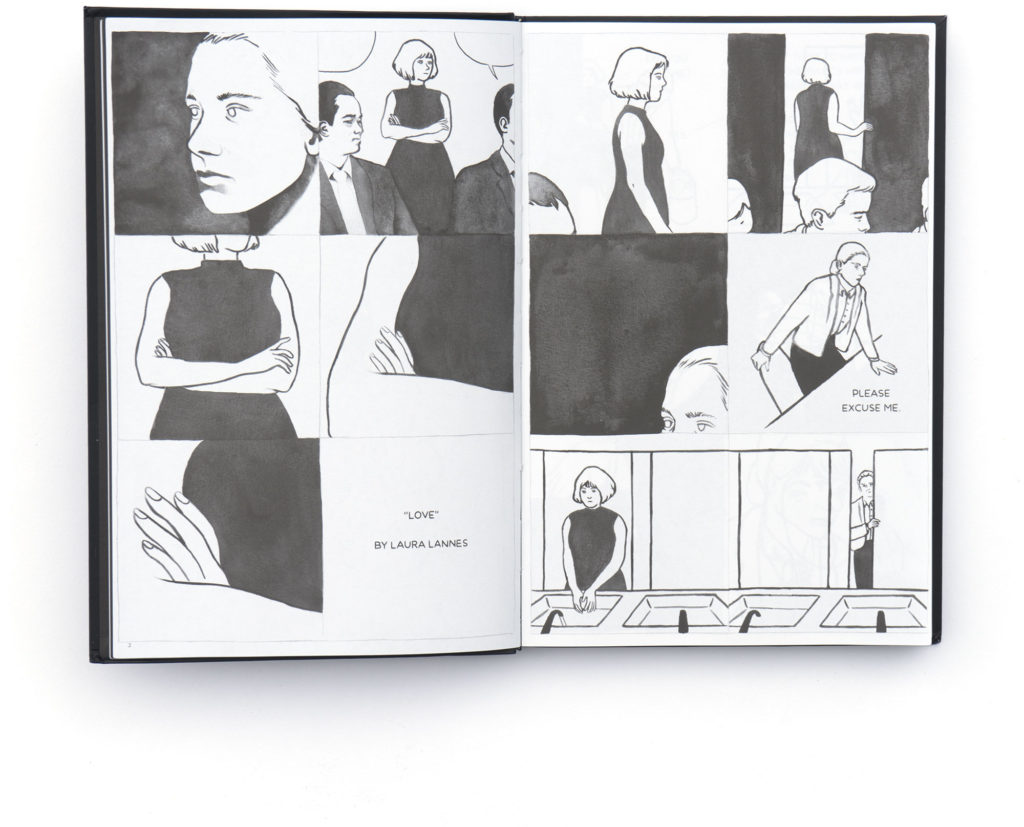
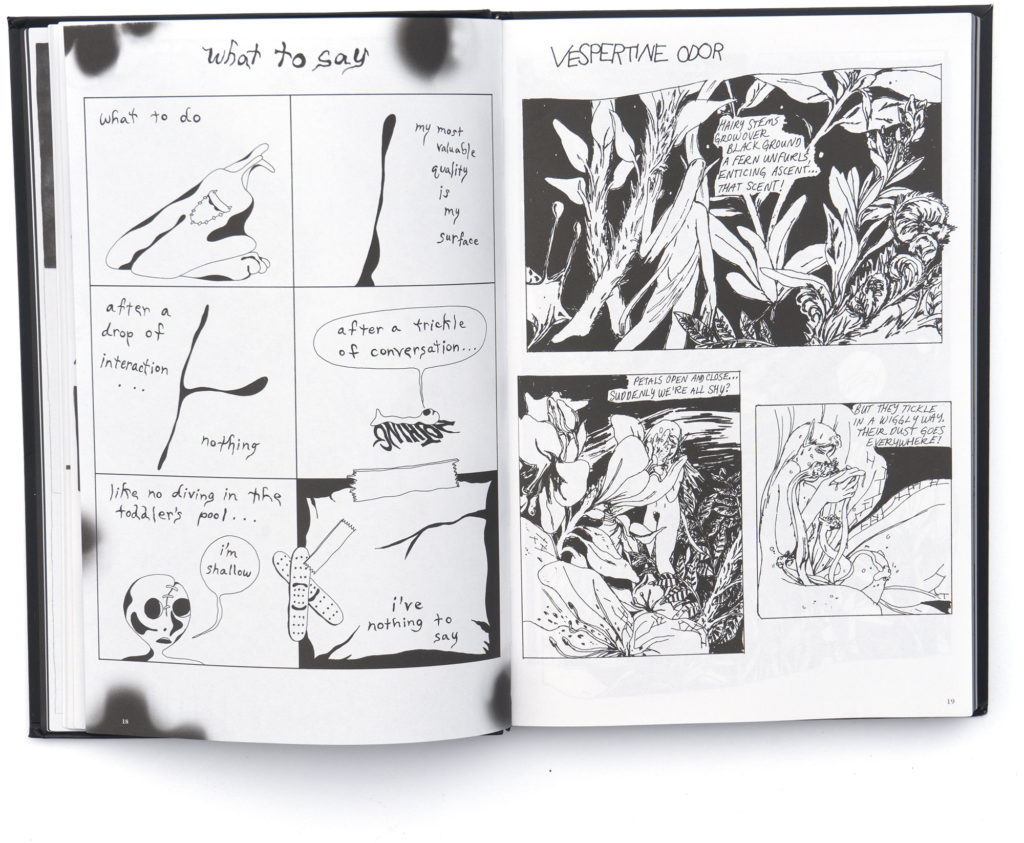
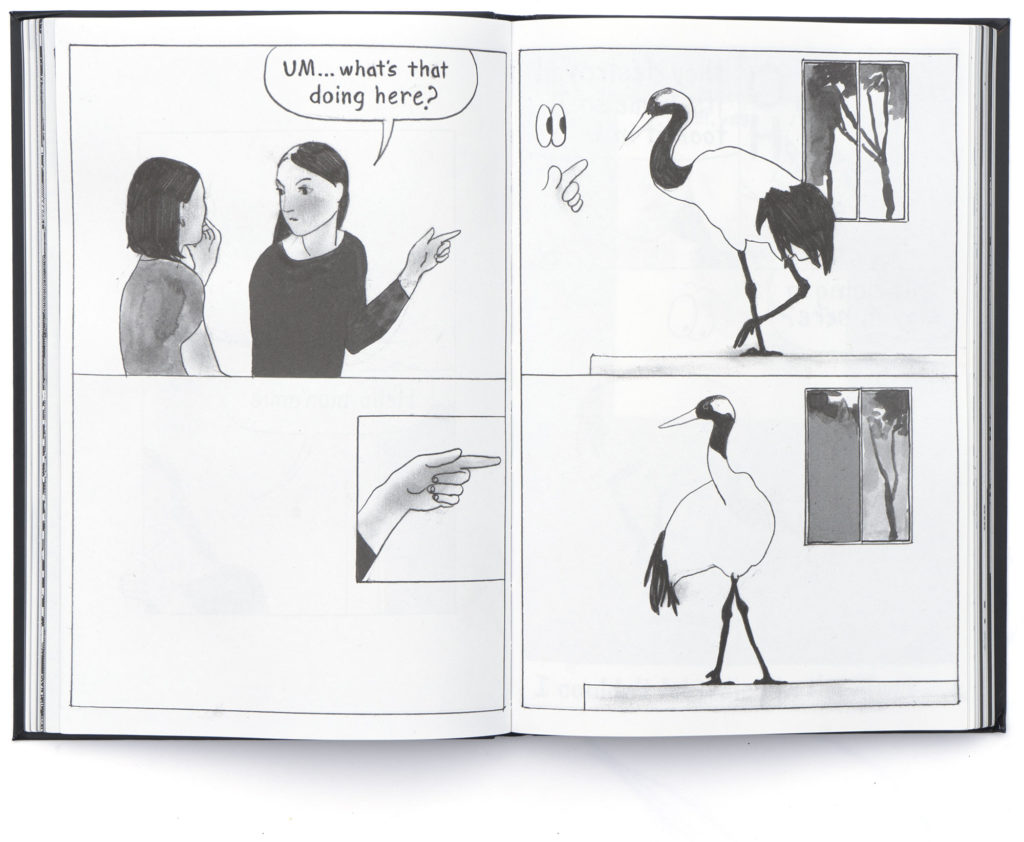
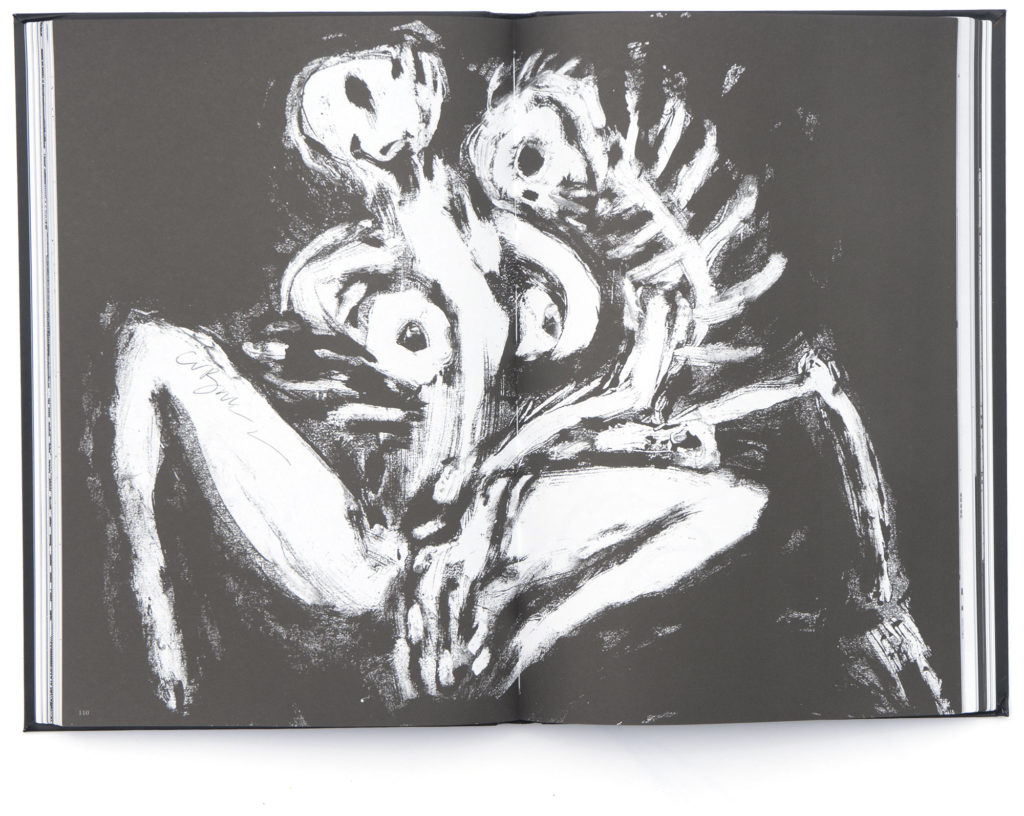

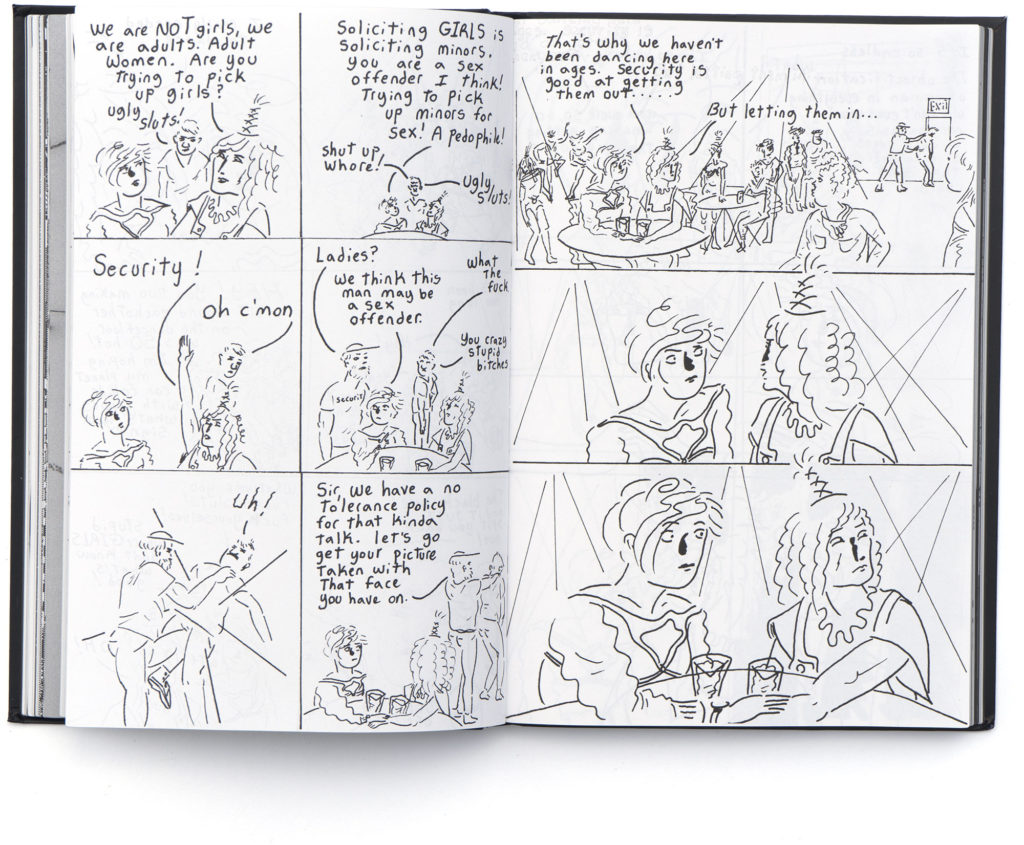
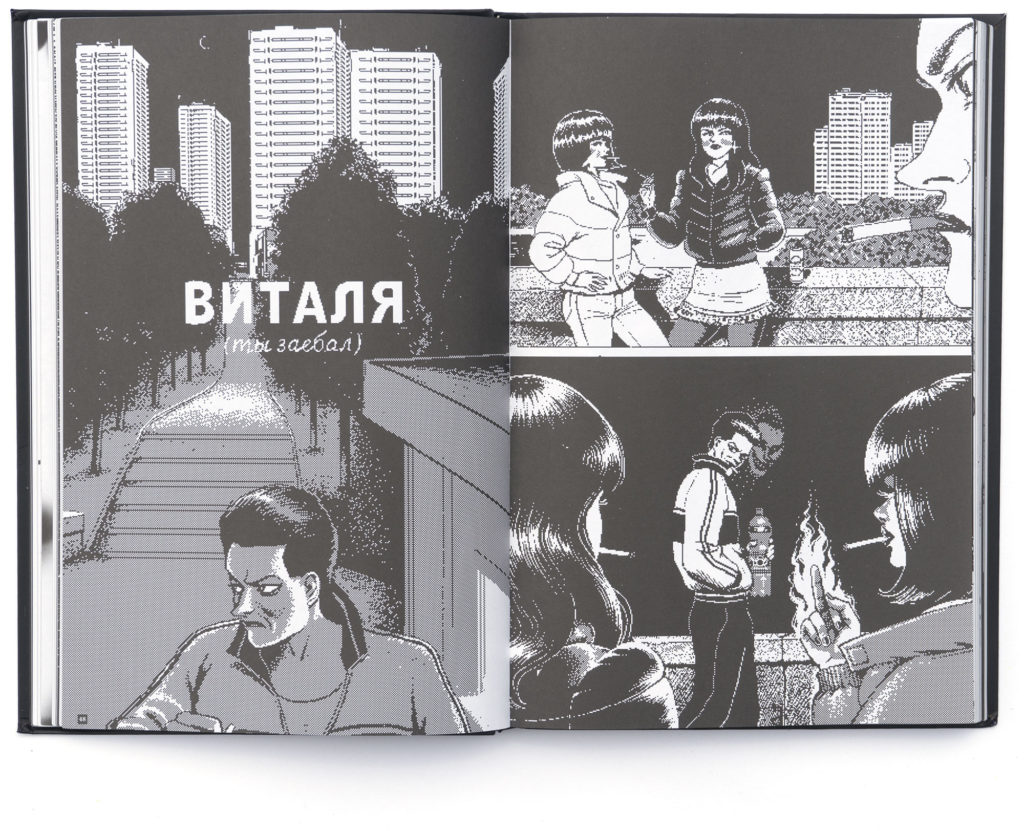
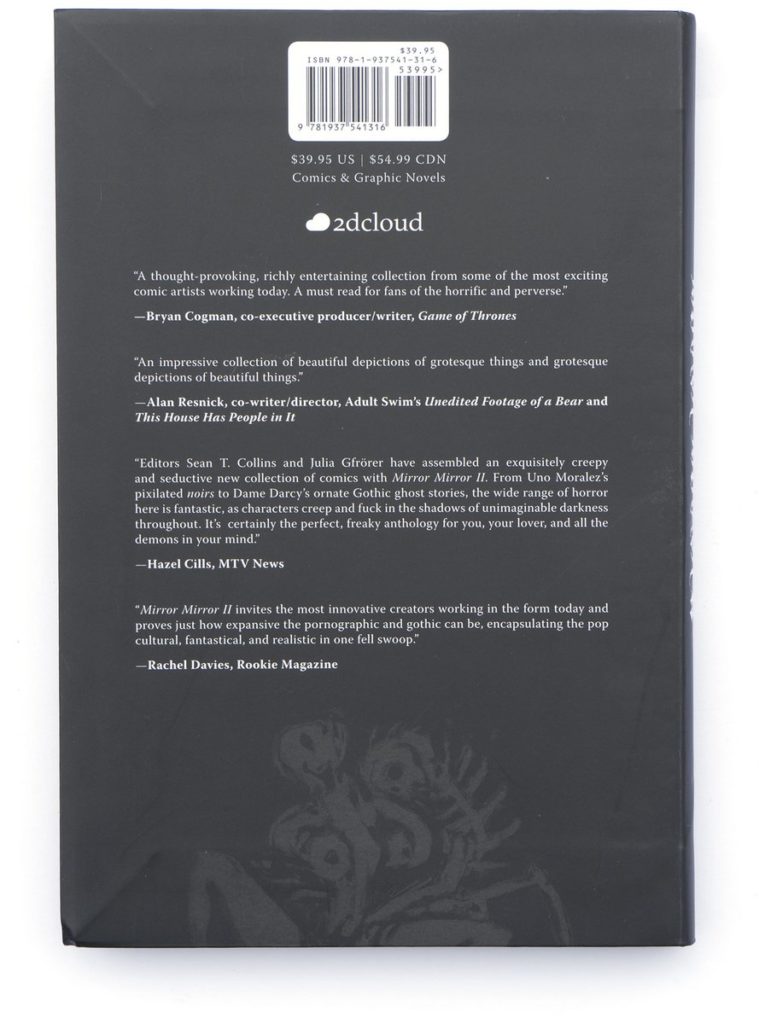
Mirror Mirror II is now available for purchase at Amazon. It’s already shipped, and people have already received their copies. You can order it from Amazon, or pre-order it from our publisher 2dcloud — copies will ship soon.
I’m so glad this book is in the world for you.
“Fargo” thoughts, Season Three, Episode Ten: “Somebody to Love”
June 24, 2017The question facing us is simple. Does Varga walk away, or is he locked up? Will he exalt himself like the eagle and make his next among the stars, or will the Lord bring him down? Is Schrödinger’s metaphorical cat dead or alive? Is the ethical universe half-full or half-empty? The lady, or the tiger?
I want to focus on writer Frank R. Stockton’s extremely famous short story of that name here, because I think the ending of this episode will be similarly misconstrued. The gist of “The Lady, or the Tiger?” is simple enough: In ancient times, a barbaric king offers a condemned man a choice inside a gladiator-style arena where two doors stand before him. Behind one is a ravenous tiger that will devour him on the spot; behind the other is a beautiful woman who will marry him on the spot. The process is completely random, and the prisoner has a fifty-fifty chance of life or death. (“Call it.”)
At least that’s the version of the story you may recall from the dim recesses of memory of English classes gone by. In reality the situation’s a lot more complicated. For one thing, if you get lucky and wind up with the lady, the capricious king will insist you marry her no matter your previous familial commitments or romantic entanglements. Happily married already? Tough luck.
For another, the specific case at the center of the story is a unique one. The condemned man in question, described by the story’s narrator in a sardonic and self-aware voice not far removed from that of Fargo’s occasional voice-over commentators as “a young man of that fineness of blood and lowness of station common to the conventional heroes of romance who love royal maidens,” has been sentenced to this ordeal for the crime of falling in love with the king’s daughter. Like her father, the princess is herself a barbarian by nature, and through sheer force of will has discovered the secret of what lies behind each door. But that same barbarian blood makes her intensely jealous of the other lady in the equation, to whom her suitor will be betrothed should he dodge that tiger-shaped bullet. It’s up to her to signal to the dude which door he should take, and up to us to guess whether she’s sent him to his death or to a life without her, a fate less bloody but possibly no less cruel, in the princess’ eyes anyway.
Apply these lessons to our current story, and the simple choice between good and evil we’re asked to make when we speculate about the outcome of Varga and Gloria’s meeting becomes way less simple.
I reviewed the finale of Fargo Season Three, and quite possibly Fargo itself, for Decider. I think it’s a far more complex episode than surface readings of its ending give it credit for, and I think overall it may be the season that haunts me most.
“Better Call Saul” thoughts, Season Three, Episode Ten: “Lantern”
June 20, 2017In the gorgeously shot sequence that helps open the episode (following the portentous cold-open flashback in which young Chuck assures young Jimmy that everything will be alright in the story they’re reading by lantern-light together), Howard faces the older man down across the lighted arches of HHM’s conference table, before dismissing the other partners so they can speak alone. Actor Patrick Fabian is…well, after seeing him in this role, where he has to take his natural USA Network blue-sky legal-eagle-drama good looks and imbue them with complexity and depth, you wanna see him sink his teeth into something even juicier. For now, though, he’s completely convincing as a straight-and-narrow, buttoned-up guy who worked for years to protect a man he considered a friend, only for that friend to attack him when he dared suggest a different course of action. “Your first instinct is to sue me?” he asks, the incredulity written all over his face. He winds up buying Chuck out of the firm using funds drawn from his own pocket. The ensuing faux-farewell scene, in which the entire office floods the foyer to wish Chuck goodbye, is like something out of The Young Pope—figures lining balconies, overhead shots of curvilenear staircases, a system working in concert to expel a person who does not belong.
This leaves us with Chuck himself. Between his humiliation at HHM and his severing of ties with Jimmy, he suffers a psychological blow that not even his hard-fought recovery from psychosomatic illness can surmount. At first I was kind of bummed out by what ensued: prestige TV’s umpteenth homage to The Conversation, as Chuck’s mental dissolution is metaphorically depicted by his dismantling and destruction of his house in search of a stray electrical current he can’t seem to shut off at the source. But between Michael McKean’s go-for-broke performance and Dave Porter’s evocative, trumpet-based score, something happens that transcends the sequence’s origin. Before too long it’s clear that something deeper than metaphor is at work. Chuck is losing his mind, permanently. As in, it’s lost. He’ll never find it again.
The episode ends with an image that’s all but nauseating in its unfiltered depiction of this loss. With his house a debris-strewn ruin, Chuck sits at his desk, eyes vacant, his legs repeatedly—almost automatically—kicking. The only satisfaction remaining to him is that of destruction, a feeling his brother Jimmy knows only too well. He just kicks and kicks and kicks at his desk until, finally, his lantern falls off, and explodes, and starts a fire we witness silently from across the street. Chuck has no friends, no family, no sanity. But death is always there for you, waiting. Like the brother you wish you had.
I reviewed the beautiful season finale of Better Call Saul for the New York Observer.
How ‘Better Call Saul’ Secretly Became One of TV’s Best Dramas
June 20, 2017Better Call Saul has also secretly morphed into one of the most visually accomplished shows on the air. Bad‘s riotous visuals echoed its chaotic plot, but this prequel has taken a more austere, slow-and-steady approach to its storytelling – and its cinematography follows suit. Directors of photography Arthur Albert (for Seasons One and Two) and Marshall Adams (his successor for Season Three) favor shot compositions that emphasize the geometry of the spaces that Jimmy & co. find themselves in: rectangular windows, square glass bricks, the diagonal slash of a staircase, the glowing arches of a conference table’s lights. The result is an elegant claustrophobia, in which the characters look pinned to a grid or a game board, unable to control their own movements.
And during the show’s third season, Adams adapted Albert’s already impressive use of different lighting styles into a cleverly coded system, to the point where you could almost tell which character’s story we’d be following before they appeared on screen. Jimmy’s segments are brightly lit by the New Mexico sun or by the glare office-light fluorescents, casting a spotlight on his sins. Chuck exists in a shadowy world of his own making, silhouetted in the darkness of his house against a clean white haze of daylight from his windows or the glow of his indoor lantern. Mike’s nocturnal prowlings are given an amber yellow cast – the color of caution, warning and ear, all subliminally signaling us to slow down and watch out.
Saul Mighty: With some help from editor David Fear, I wrote about how Better Call Saul transcended its prequel roots to become one of the best shows on television for Rolling Stone.
“Twin Peaks” thoughts, Season Three, Episode Seven
June 19, 2017The third pseudo-ominous scene, and we’re gonna guess it’s the one that gets people talking, takes place in the Bang Bang Bar, a.k.a. the Road House, a.k.a. the place where we just sit around and watch a guy sweep up debris from the floor for nearly the entire duration of “Green Onions” by Booker T. and the MGs. Why? The answer that springs to mind is “why the hell not,” and hey, that’s perfectly valid. But the phone conversation that ends the scene, in which Jean-Michel Renault (no, not the long-dead sleazebag Jacques, but one of his equally gross relatives) rants and raves about the 15-year-old girls he pimped out to an unhappy client, provides a different answer. What you’ve got here is the banality of evil: A dude who can sit around twiddling his thumbs to an old R&B classic, then pick up the phone and crack jokes about statutory rape. As Jacques would say in a thick French-Canadian accent, “Bite ze bullet, baby.”
I reviewed last night’s tense and clever Twin Peaks for Rolling Stone.
“American Gods” thoughts, Season One, Episode Eight: “Come to Jesus”
June 19, 2017Mr. Wednesday’s war has come, but we’ve gotten his target wrong all along. Sure, he wants to unite the surviving old gods of the world’s various fallen faiths and pantheons against the New Gods of American hegemony—technology, the media, guns, commercialization, and the military-industrial-corporate-intelligence-government complex represented by the mysterious Mr. World. But attacking we the people is his way to win. In “Come to Jesus,” the eight and final episode of American Gods’ spectacular misfire of a first season, the war begins — a biological war in which Wednesday recruits Ostara, goddess of spring, to destroy all the vegetation in the nation until people begin worshipping the old gods again. “Never once have they had to work for it,” he reasons, “give thanks for it.” His plan is to starve us pampered Americans into prayer.
Wednesday’s thesis, and by extension the show’s, is an even more fundamental misreading of American life than the series’ underlying assertion that in our country’s centuries-long existence it hasn’t had room for legends, myths, and magic. Certainly vast swathes of America have been insulated from hunger, poverty, violence, and toil — though that swathe is getting smaller by the year. But the very idea that “never once have they had to work for it, give thanks for it” is the height of blinkered liberalism, a world view that recognizes the existence of injustice but always manages to locate it elsewhere. As of 2015, the year American Gods was greenlit, thirteen percent of American households are food insecure; in some states that percentage rises higher than one in five households. This pat assessment of America as a land of coddled weaklings who’ve never struggled may be true from where Neil Gaiman, Bryan Fuller, and Michael Green are sitting, but any Viking war god worth his salt ought to fucking know better.
The Boiled Leather Audio Moment #7
June 16, 2017Moment 07: Bran and the Time Travel Effect
On this month’s subscriber-only Boiled Leather Audio Moment, we’re going back…to the future! Okay, not really—that’s sort of the point of the discussion. In our first-ever BLAM available at our new $2 reward level, Sean & Stefan answer a question from listener Max B. about whether recent events on the Game of Thrones adaptation indicate that Bran Stark, everyone’s favorite paraplegic telepath, will have an increasingly dramatic effect on past events in the world of the story. Paradoxes abound, and to borrow Ser Barristan’s unfortunate phrasing we slice through them like a knife through cheese. Hit that $2 subscription button, then press play!
BLAM for a $2 Bill: New Patreon Reward Tiers!
June 16, 2017Hello folks! First off, thank you all for your continued support of the Boiled Leather Audio podcasts, both Hour and Moment, via our Patreon. We wanted to give you a heads up that as of June’s subscriber-only Boiled Leather Audio Moment, we’re raising the reward tier for BLAM access from $1 to $2. We couldn’t keep that low low introductory price that low forever, or it would have ceased to be introductory, thus creating a tear in the spacetime continuum and threatening all of existence with annihilation. That said, we hope you’ll consider upping your pledge so you can continue to listen to each new BLAM–we’ve had a lot of fun with them and think they’re worth it.
Meanwhile, we’re shifting the $1 reward tier so that it remains the doorway to the subscriber-exclusive posts Stefan’s been doing on the Patreon site. Be sure and check them out if you haven’t already! Everyone subscribing at $2 or more will still have access to the Illustrious Co-host’s wit and wisdom, of course.
Thanks again for your support. It means so much to us!
Sean & Stefan
“Fargo” thoughts, Season Three, Episode Nine: “Aporia”
June 16, 2017I’ve enjoyed season three of Fargo so much for so many reasons that I’ve barely had the time or inclination to comment on the few things that haven’t quite clicked. Now’s as good a time as any, since the clicking has finally occurred. Basically, Ewan McGregor’s performance(s) have been one of the season’s few weak links. He’s never been bad as either Emmit or Ray Stussy; I don’t think he has it in him to deliver a bad performance straight-up. But I’ve gotten the sense from time to time of an actor clinging to his wigs as a sort of life raft, the only way he can navigate the choppy waters of playing two superficially similar but very different characters, who look alike, in an accent completely alien from his own. (He’s not as bad as, say, Peter Dinklage trying to be posh, but the Scottish texture of McGregor’s voice is hard for him to disguise completely when he plays American, as viewers—or in my case, triple-digit re-viewers—of his work in Velvet Goldmine could tell you.)
There were already signs that this was ending in the last couple of episodes. Think of the way he ranted and raved about the travails of the One Percent during his lunch meeting with Mrs. Goldfarb after he accidentally killed his brother, a convincingly inappropriate and desperate coping mechanism. Or the cast of his face as he waved down to Sy Feltz for what he may well have known was their last moment of genuine human connection. Or his guilt-stricken panic when Nikki and Wrench began taunting him with the detritus of he and his brother’s history. The accent is the accent, but underneath a person was emerging.
In this week’s episode, “Aporia,” that person emerged in full. It happened during his beautifully framed confession of murder to Gloria Burgle—less “just the facts” than a rambling, time-jumping journey through his entire sorry relationship with his kid brother Ray. It’s one of those moments where you can see an actor seizing the best stuff he’s been given all season, like a swimmer surfacing for that first big fresh gulp of air.
I reviewed this week’s fantastic episode of Fargo for Decider.
